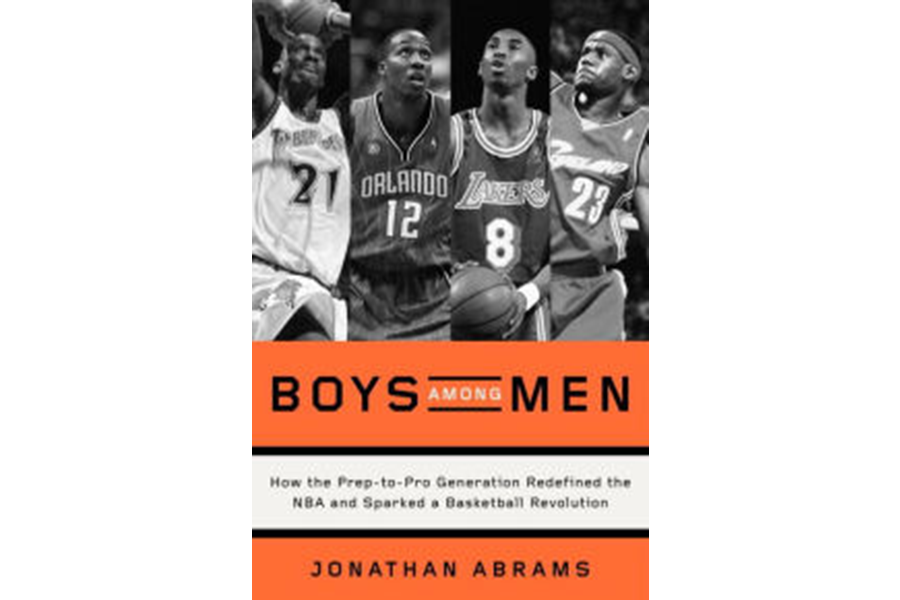Ever since the 1960s, occasional high school basketball phenoms (to wit, Moses Malone) have made their way directly to the pros without playing a minute of college ball. The floodgates to the prep-to-pro generation swung wide open, however, during the mid 1990s when Kobe Bryant and Kevin Garnett led a wave of precocious teenagers in jumping directly to the NBA. The league put the brakes on this trend in 2005, requiring all draft-eligible players to be at least one year removed from high school, a rule that has spawned much debate. Now, given an opportunity to look back over the careers of Bryant and Garnett, as well as those of a number of other players who’ve both succeeded and failed at making the leap, author Jonathan Abrams is able to put what has happened in perspective.
Here’s an excerpt from Boys Among Men:
“The debate over the NBA drafting athletes right out of high school grew as [LeBron] James’s exploits quickly catapulted him into superstardom. There had been rumors at one time that James would not only skip college, but also his senior year of high school to join the NBA. Was his youth being stolen? Should the media be highlighting him so much? Should his school profit off the talents of this phenom? Should the kid be able to profit from his own talents while in high school? James was named Ohio’s Mr. Basketball for consecutive years and was featured as a junior on the cover of Sports Illustrated, anointed as the Chosen One. Most of St. Vincent-St. Mary’s games had been moved from the high school to the University of Akron’s James A. Rhodes Arena – where they outdrew the college’s team. A handful of the games could be watched throughout northeast Ohio for $7 on pay-per-view. The school argued that it was just trying to meet the demands of its alumni and its growing fan base.”







